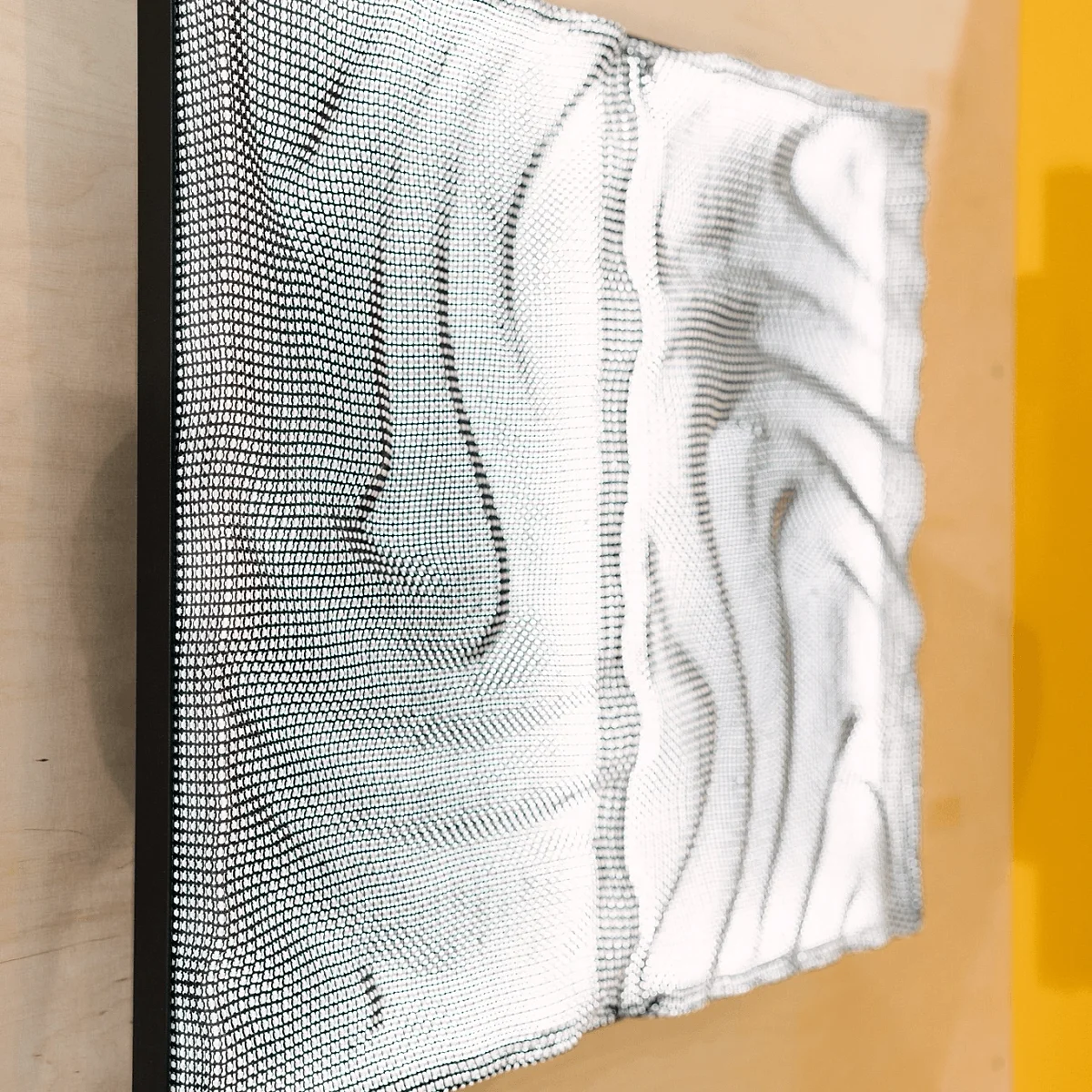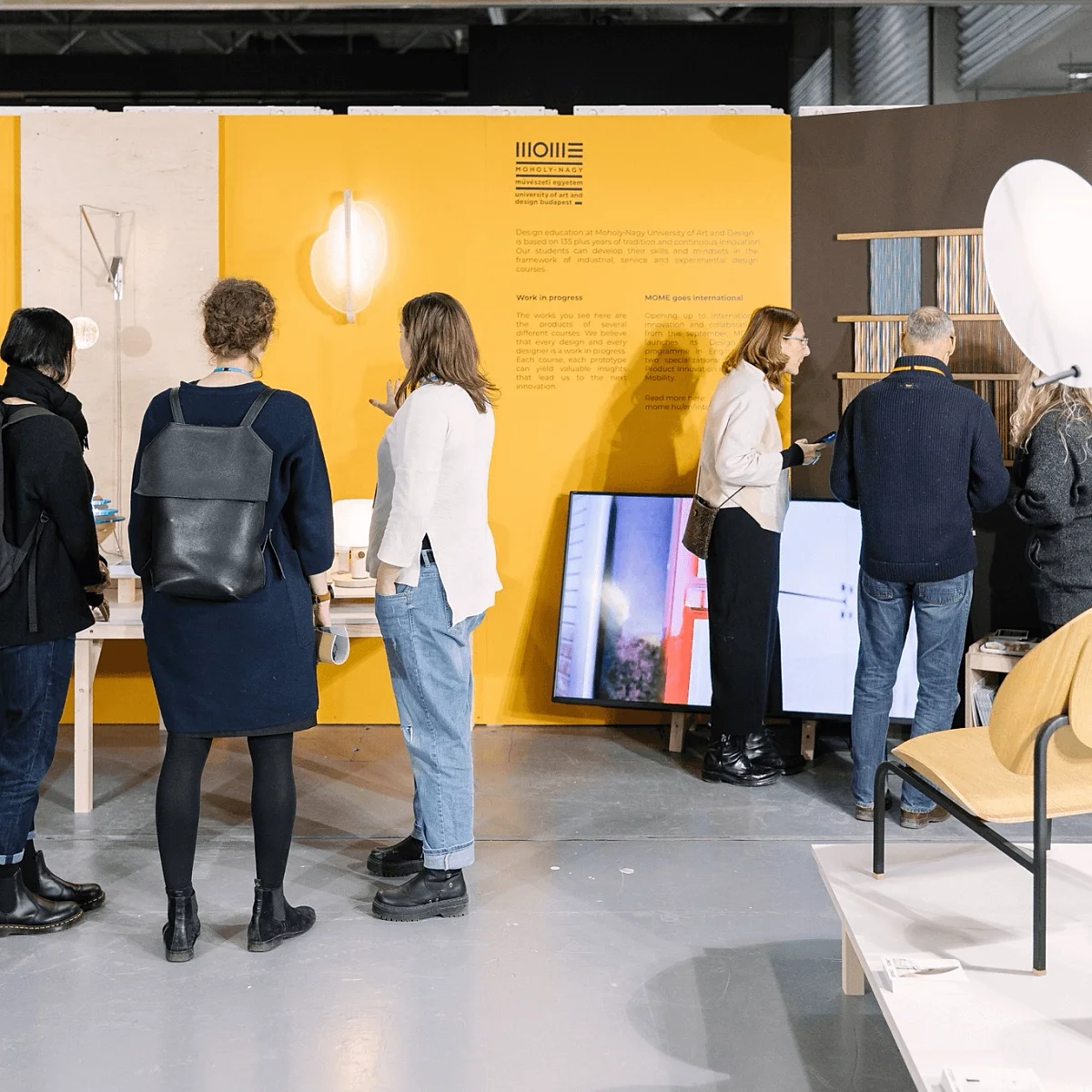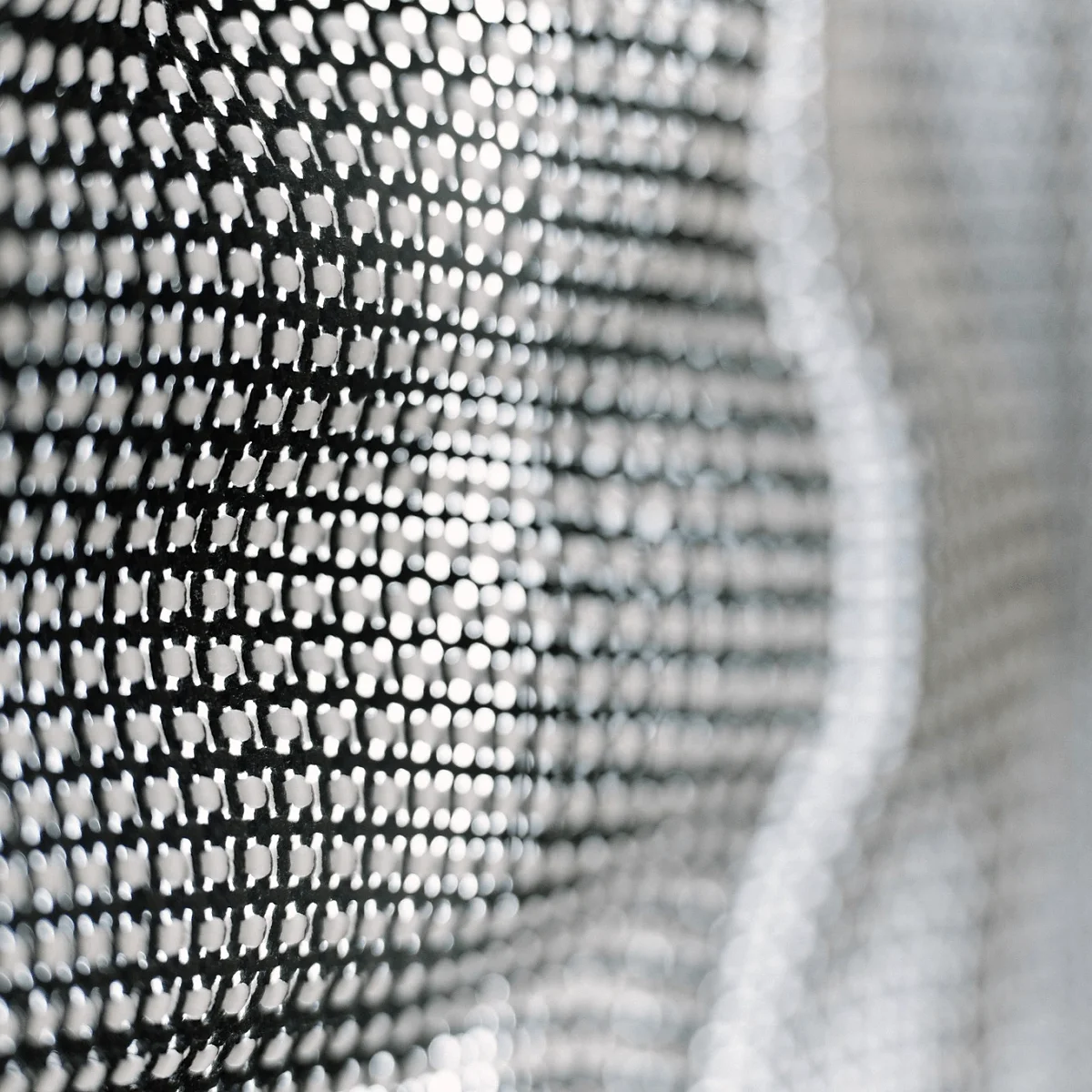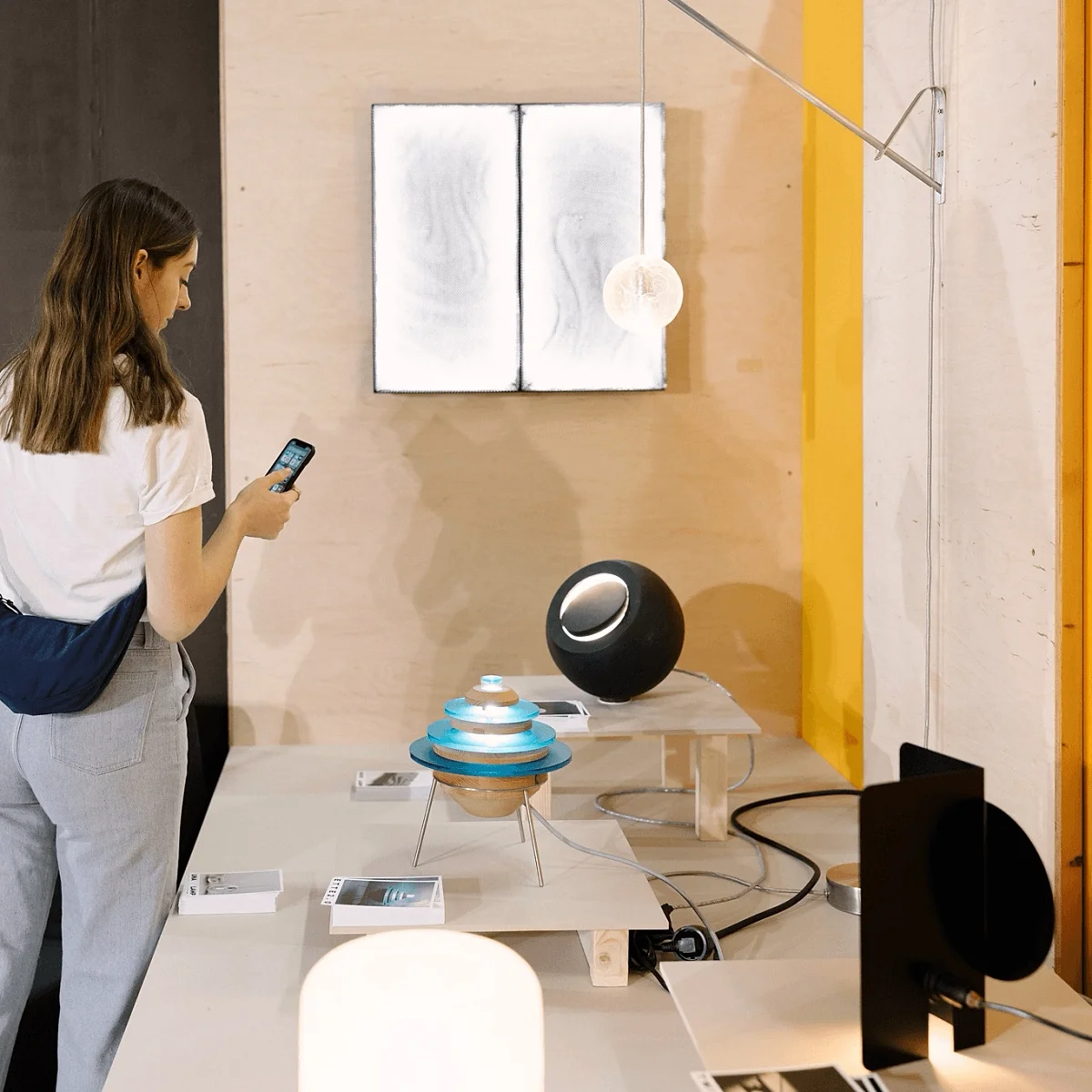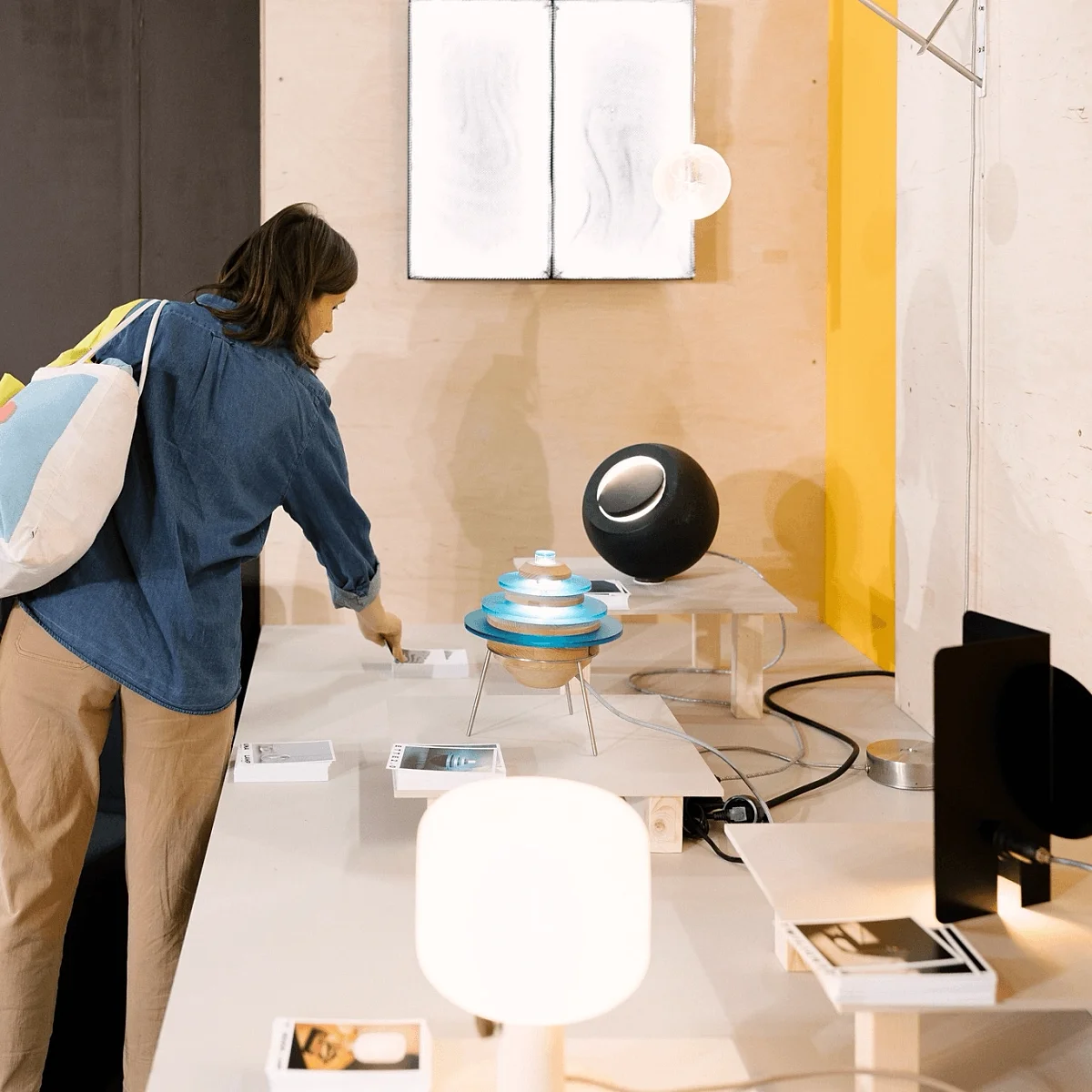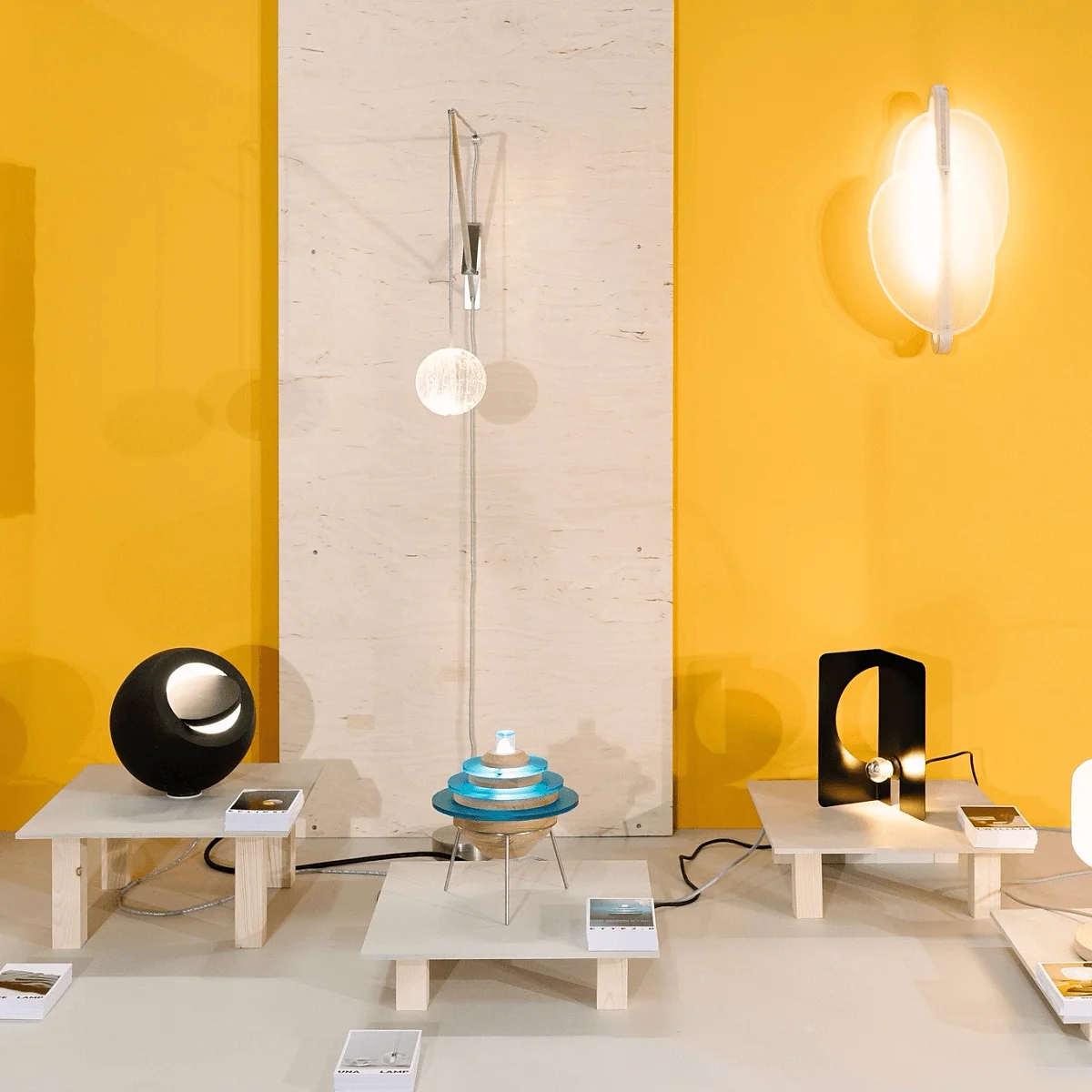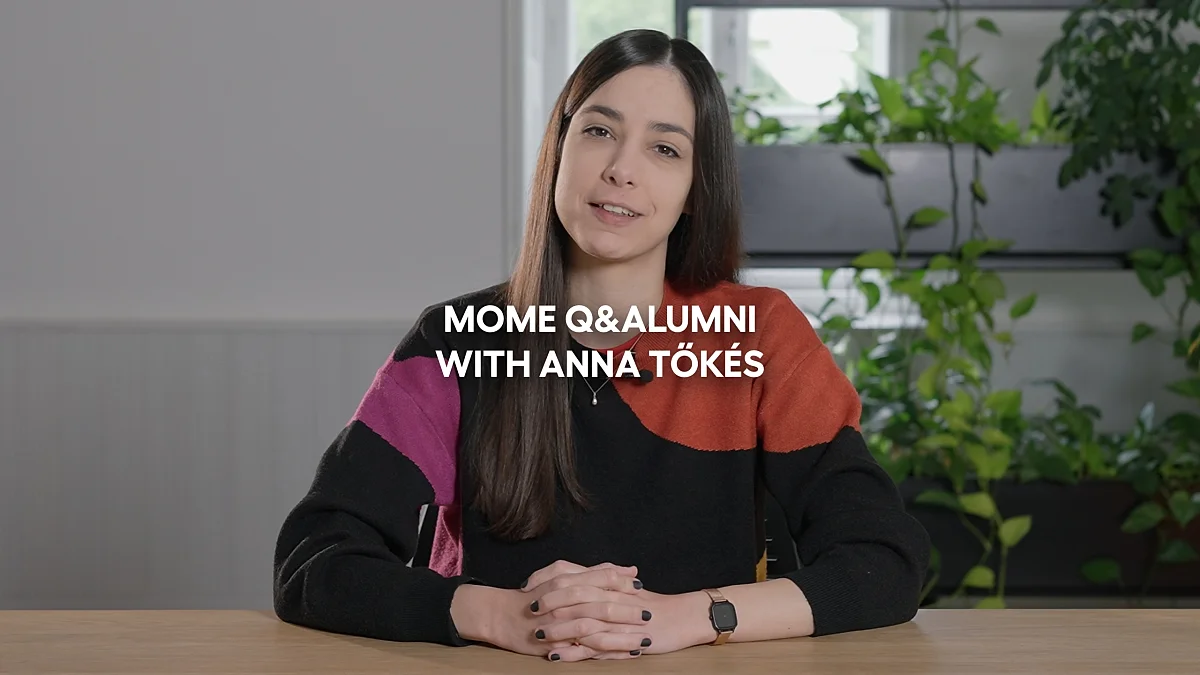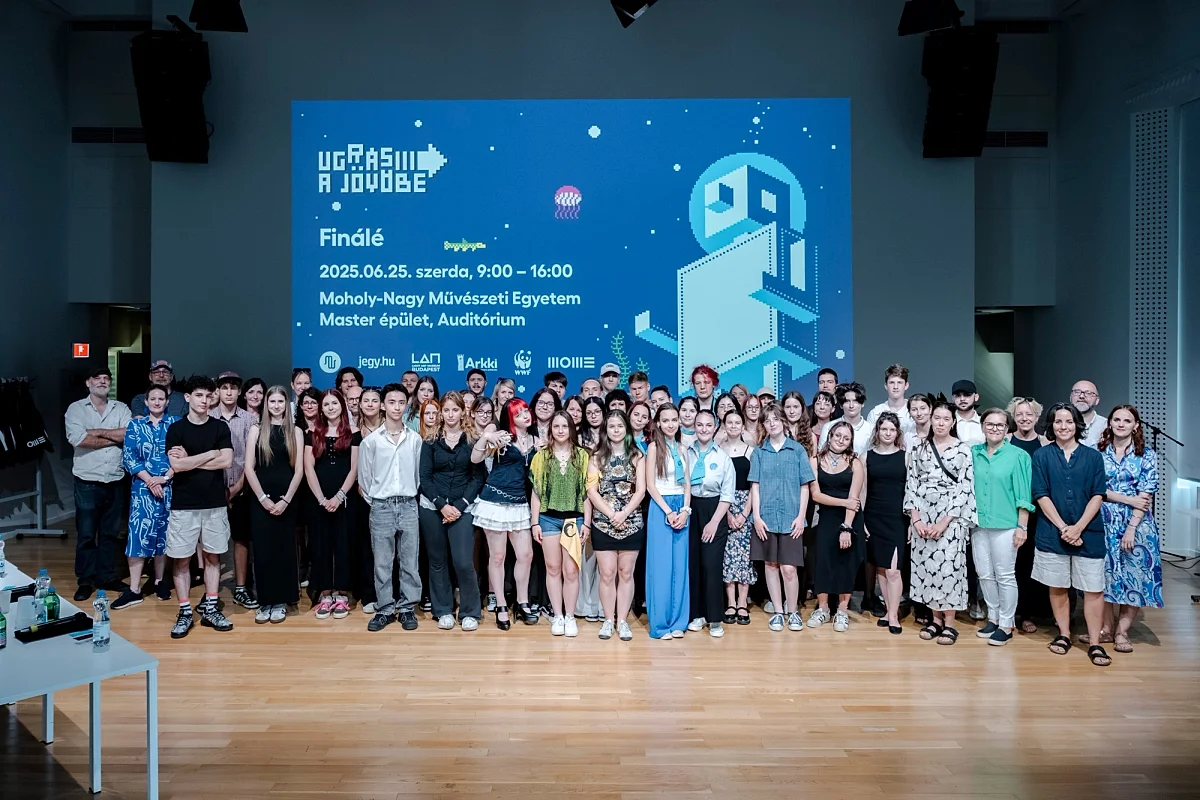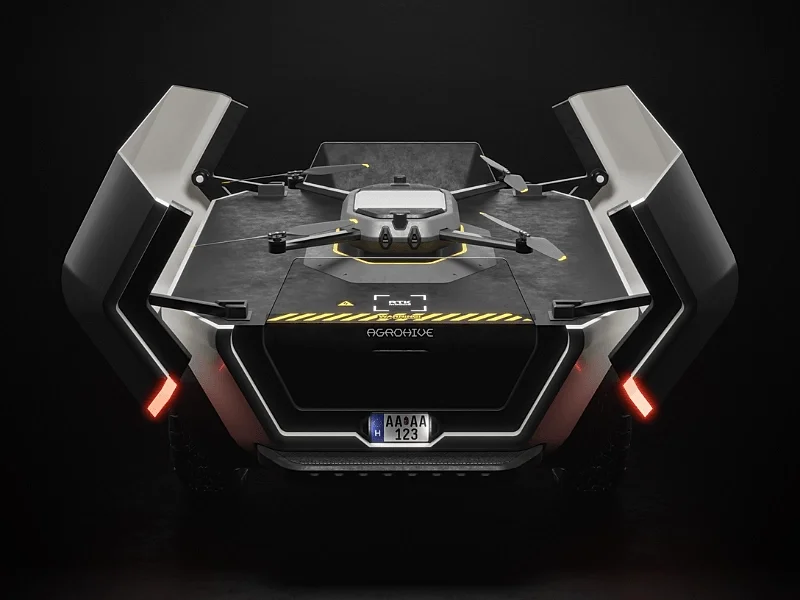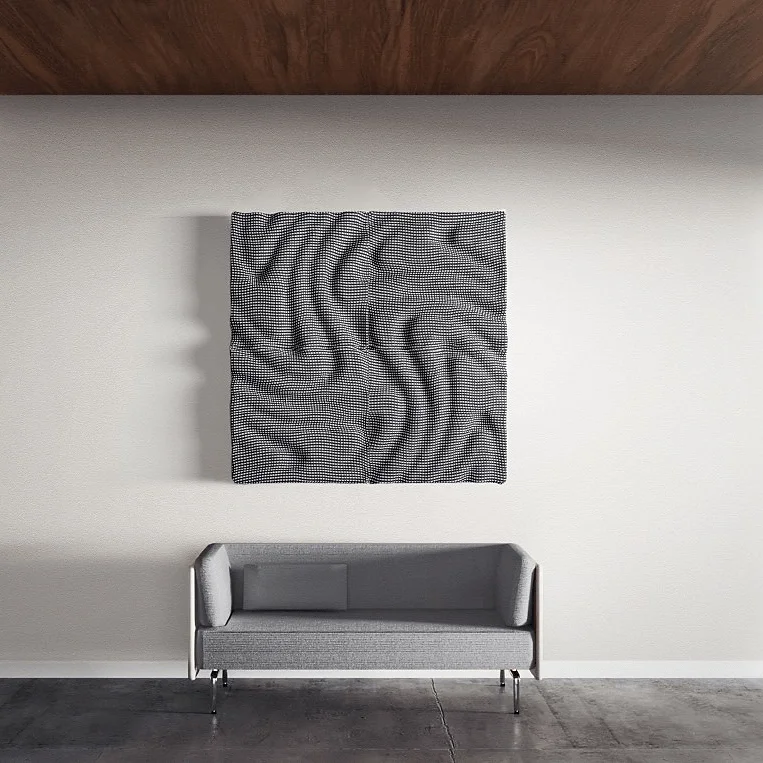
The Wave lamp made its debut in Stockholm | Interview with the designers
The course assignment consisted of designing unique light concepts and luminaires that can also improve the acoustic properties of a space in addition to giving light. Production of the prototype of the Wave lamp was launched by the designers jointly with LumoConcept and the lamp was also debuted in Stockholm.
Thanks to this collaboration, the increasing infiltration of lighting design into the product design programmes proved to have an inspirational effect on students: compared to 2019 and 2020 characterised by predominantly furniture-oriented designs, in this year, lamps also featured heavily among student works.
In addition to offering students a proper platform for debuting their items, the Furniture and Light Fair in Stockholm also provides an opportunity for finding inspiration and for networking. The Stockholm fair provided the cue for our interview with designers Ildikó Varga and Benjámin Melegh about the Wave lamp created as part of the MOME x BE LIGHT! collab.
Why did you sign up for, and ultimately what was your takeaway from the MOME and Be light! course?
I: As a product designer, I found the opportunity to design lamps very appealing, and the collaboration with Be light! weighed heavily in favour of the course, because being able to meet and consult professionals from companies in the industry is important to me. My partner and I went through a free creative process over the course, which taught us a great deal about lighting technology and coordination between different creative areas.
B: This was my second time taking this course. I signed up because as a photographer, we normally don’t have the opportunity to create a physical object from scratch. At the course I could experiment with materials and experience the design first hand. The teamwork has exceeded all my expectations, and in addition to an exciting concept, a prototype was also completed.
Did you have any previous experience with lighting or acoustics before the course?
I: Before the course we didn’t have a chance to study lighting or acoustics. The combination of the two areas definitely opened up exciting new horizons.
What was the inspiration for the creative process? How difficult was it to work as a team?
B: We started out by making mood boards, and the concept gradually took shape with the input from the resulting inspirations. Coming across an intriguing textile with an unusual effect when placed next to a light source was an important turning point in the design process. From that point on, the process took a very experimental turn, and was pushed forward by previous inspirations. The wavey surface in the panel and the textile lend the product a unique light effect and excellent acoustic properties.
I: We needed some time to figure out how to utilise our skills and experience from our own fields in this project. After getting in sync and developing a shared language in the creative process, the work together went smoothly.
How was the prototype created and how long did it take?
B: We created the first models at the MOME workshops. As the concept evolved throughout the semester, we experimented with various details of the lamp. One of the most important points was finding the right curing technology for the textile. In the end, we used industrial-grade starch. Creating the wavey surface to which we cured the fabric was also a challenge.
I: The first prototype was developed and manufactured this year. After improving the first model, the prototype was created based on our designs in collaboration with Lumoconcept, resulting in a lamp that was better suited for serial production. Working with such an expert and inspiring team like Lumoconcept was a great experience. Important production issues included the long-term sourcing of the textile with a currently unknown origin. The development team of the German JAB Astoetz Group has already started experimenting with producing a textile with similar properties.
What was it like to follow the lifecycle of a project from the first drafts to implementation?
I: Creating a mock-up is very important for a project, providing a lot of lessons and raising new questions, which paper-based designs cannot accomplish. This is the first time a prototype is developed in collaboration with a company. It was intriguing and educational work.
B: This design process was a completely new experience for me. I have never created something this degree of purpose. It is still incredible to think that the lamp was created by us from scratch. I am glad I had the opportunity to experience what it’s like to follow through with a project in a setting a little removed from the university.
Did you need to make any changes to the original draft concept?
I: Not during the development phase. For the execution, we revised and fine-tuned some of the technical details. The consultations with Lumoconcept did provide a solid professional background for the execution.
Soon enough, your design has made it to the Stockholm exhibition. Would you have thought it possible when you began the course?
B: At the start of the course, we were told that the best design can make it to Stockholm, but I didn’t think it would really happen, or that it would be our work that ended up liked by the most people.
I: I was very much preoccupied with and enjoyed the creative process. lot. Though I knew there was a chance for our work to be shown at the exhibition, it wasn’t our purpose really.
The interview was published in octogon magazine. Click here for the Hungarian version:
https://www.octogon.hu/design/stockholmban-debutalt-a-wave-lampatest-interju-az-alkotokkal/
